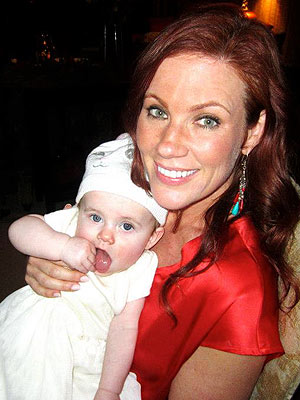Last Updated, 5:57 p.m. As our colleagues Kareem Fahim, David Kirkpatrick and Mayy El Sheikh report, the mayhem on Cairo’s streets briefly spilled into the lobby of one of the city’s luxury hotels, the Semiramis InterContinental, during intense clashes between riot police and protesters along the Nile Corniche overnight.
Images of a mob streaming into the hotel, shown live on Egyptian television and then posted online, raised fears of further damage to the country’s already battered tourist industry. Coming at the same time as violence in cities on the Suez Canal, this week’s unrest threatened two of the main pillars of the Egyptian economy.
Judging by a series of urgent pleas for help posted on the hotel’s Twitter feed, the raid came just after 2:30 a.m. local time.
We r under attack and several thugs have entered the Semiramis … We need help #jan25 #jan28 #Tahrir #EgyPolice
— InterContinental (@ICSEMIRAMIS) 29 Jan 13
PLEASE SEND HELP #EMERGENCY! WE ARE UNDER ATTACK! SEVERAL THUGS HAVE ENTERED THE SEMIRAMIS! #jan25 #jan28 #Tahrir #EgyPolice
— InterContinental (@ICSEMIRAMIS) 29 Jan 13
SOS If anyone knows anyone in #Military #Police #Government, please send help! Thugs in Lobby #Emergency #Tahrir #Jan28 #Egypt
— InterContinental (@ICSEMIRAMIS) 29 Jan 13
Within an hour of sounding the alarm on the social network, the staff reported on Twitter that the security forces had arrived.
Special forces are on scene and handling the situation. Thank you to everyone for your help and speedy response to our SOS!
— InterContinental (@ICSEMIRAMIS) 29 Jan 13
Guards at the hotel told Bel Trew of the Egyptian news site Ahram Online that phone calls to the police and the army initially went unheeded as about 40 men armed with shotguns, knives and a semiautomatic weapon broke into the shuttered lobby and started looting.
An Ahram Online journalist who witnessed the attack, Karim Hafez, said that protesters had stopped fighting with the police to help secure the hotel: “When they realized these groups were trying to loot the hotel, protesters shot fire crackers at them as they attacked the building and tried to push them away from the area but these groups were armed with birdshot bullets.”
This reported cooperation of the protesters with the police officers they have been battling for days on the street outside the hotel prompted bloggers like the British-Egyptian journalist Sarah Carr to comment on the black comedy of the situation.
Protesters and police suddenly one hand at the Semiramis.
— أبو كار (@Sarahcarr) 29 Jan 13
Another Egyptian blogger, Mohammed Maree, reported on his @mar3e Twitter feed that a police captain on the scene confirmed to him that the protesters who were fighting with the security forces when the raid took place were not responsible for the storming of the hotel.
police captain named Moataz told me that the protesters stopped fighting with us and told us that there are some gunmen stormed Semiramis-2
— Mohammed Mareeد.مرعى (@mar3e) 29 Jan 13
Moataz confirmed that the protesters who clashed with them over two days on the Nile Corniche didn,t involve in storming Samiramis 3
— Mohammed Mareeد.مرعى (@mar3e) 29 Jan 13
Mr. Maree also reported that witnesses to the raid said it began after four people drove up in a car with no license plates and fired shots to scare protesters away, before storming the hotel. He later posted a photograph of some of the hotel’s guests leaving under the protection of protesters.
pic: under the protection of “protesters” ,some guests of Semiramis leave the Hotel and take a taxis to the Airport http://t.co/bwSvVJBf 10
— Mohammed Mareeد.مرعى (@mar3e) 29 Jan 13
Nabila Samak, a spokeswoman for the hotel who posted the calls for help on Twitter, told The Times that the staff members had called Egyptian television stations for help earlier in the evening, well before the attack, after appeals to the security forces for protection went unanswered.
To clarify we contacted all relevant authorise & later media to draw attention as the break in attempts increased & aid had not yet arrived.
— InterContinental (@ICSEMIRAMIS) 29 Jan 13
Ms. Samak told Ahram Online that the staff worked to secure the hotel’s guests but were not equipped to cope with the effective collapse of the police force, since, “no guards of hotels in Egypt are armed.” Later she thanked protesters for coming to the aid of the hotel’s staff and guests.
Thank you all revolutionaries that stood by us last night…You are awesome#jan2813
— InterContinental (@ICSEMIRAMIS) 29 Jan 13
A Saudi women who identified herself as a guest at the hotel, Hilda Ismail, posted updates and photographs from a shelter the guests were taken to during the incident on her Arabic-language Twitter feed.
@ehabmagdy1975 احنا بملجأ مو شايفين شي تحت ايش بيصير،بس الامن بلغونا
ان البلطجية وصلوا الدور الثالث والامن المصري وصل http://t.co/wVJeyt5O— ღ..هيـــلدا (@Hildaismail) 29 Jan 13
In one message, she wrote: “If there is no Egyptian security, and if Morsi is sleeping, where are this country’s men!! Come get these dogs, the Semiramis Hotel is being ransacked and we are there.”
Later, Ms. Ismail uploaded a brief video clip of a man attempting to reassure guests that they were safe after the arrival of special forces officers from the ministry of the interior led by a Captain Moataz.
In the clip, the man tells the guests that the police captain wants “to assure you that the hotel is secured and it is under the control of the ministry of the interior now. Within no time you will go back to your rooms and already are in safe hands.” The police, the man added, “will make sure that such thugs will not enter the hotel again. We are sorry.”
Ms. Ismail also posted an image of the ransacked lobby on Twitter.
Intercontinental’s lobby earlier this morning (photo by @Hildaismail )
http://t.co/P8aO2v6I— Lamia Hassan (@LamiaHassan) 29 Jan 13
Ms. Ismai’s claim to have been a guest at the hotel was supported by the fact that she had uploaded a brief video clip, apparently shot from a high floor of the hotel, showing the fighting on the Nile Corniche below.
An unnamed hotel manager in Cairo told Al-Masry Al-Youm, an Egyptian newspaper, that “more than 45 clients insisted on leaving despite the hotel’s offer to relocate them to higher floors, away from the clashes.”
Ignace Bauwens, an executive with the luxury hotel chain, which was created in 1946 by Pan American World Airways, said in a statement e-mailed to The Lede: “The safety of our guests and colleagues is paramount and we have a responsibility to do everything we can to look after them. With the recent escalation of the situation near Tahrir Square we have decided to temporarily close the hotel for security reasons. Our guests have been relocated to other hotels further away from the demonstrations and we’re not taking any new bookings for the coming week.”
Late Tuesday, the staff posted another urgent plea for help on Twitter.
SOS: Same group as last night have surrounded #Semiramis attempting to breach all entrances. #Tahrir #Jan29 SEND HELP!
— InterContinental (@ICSEMIRAMIS) 29 Jan 13
The latest message prompted some alarm, but, as the journalist and blogger Mosa’ab Elshamy observed, the hotel’s staff, like other Egyptians, appeared to be getting used to “the daily chaos.”
@mosaaberizing @ICSEMIRAMIS Hardly encouraging & frankly, message to would be tourists is that Egypt is in chaos. Devastating for economy.
— natasha ghoneim (@natashaghoneim) 29 Jan 13
@mosaaberizing :) Sorry.I’m afraid judging by what’s been happening for 2 years, that Egyptians HAVE in fact adapted to the “daily chaos.”
— natasha ghoneim (@natashaghoneim) 29 Jan 13
Kareem Fahim contributed reporting from Cairo.














